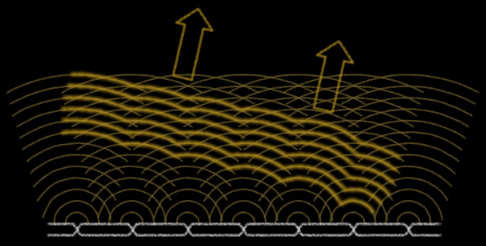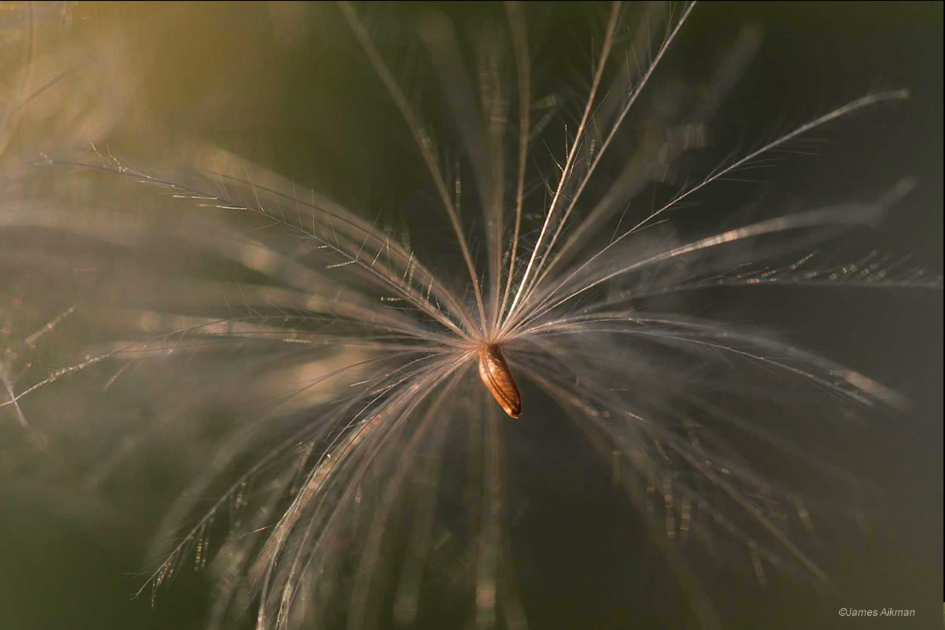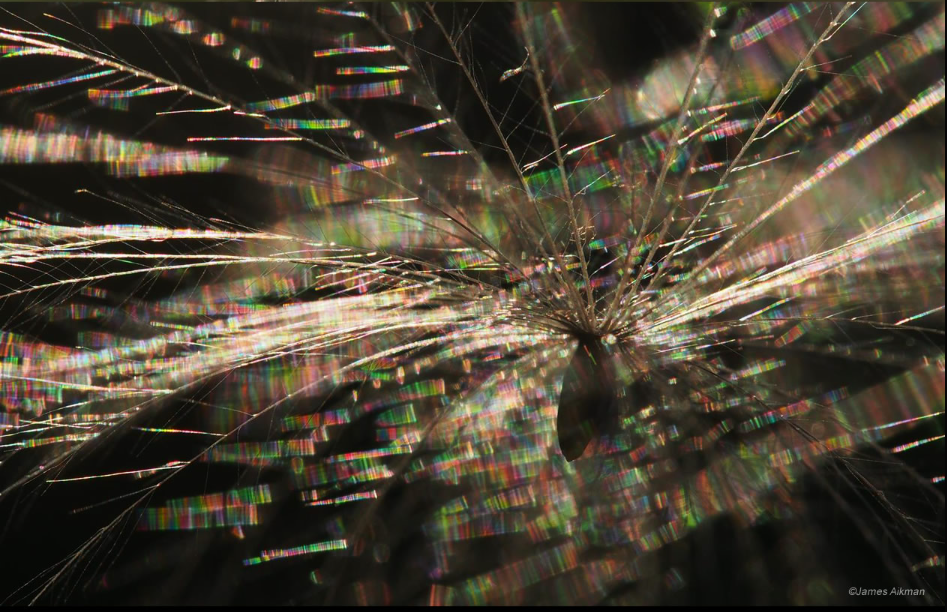Thistledown Diffraction - OPOD
Thistledown Diffraction: Unveiling the Mysteries of Colorful Fibers
Have you ever marveled at the ethereal beauty of a thistle's fluffy seed head, designed to carry far in the wind? If you've taken a closer look, you may have noticed something truly captivating – semi-random banded colors dancing across the unfocused strands. This phenomenon, known as thistledown diffraction, is not exclusive to thistles. It can also be observed in spider webs, dandelion seeds, moth silk, and even scratched bicycle wheels.
So, what causes these mesmerizing bands of colors? The answer lies in the irregularities, protuberances, or changes in refractive index along the fibers. These variations act as a poorly made diffraction grating, scattering light in various directions. When the outgoing light waves combine constructively in certain directions, they give rise to the bands of colors we see.
While we appreciate the beauty of thistledown diffraction, there is still much we don't know about the specific mechanisms at play within the fibers. For instance, in the case of spider silk, we are yet to fully understand the knots or material structures responsible for scattering light and creating these stunning displays.
To gain a better understanding of thistledown diffraction, let's explore the concept of a regular diffraction grating. Imagine a piece of glass or metal with equally spaced scratches or ruled lines. When light encounters this grating, each scratch scatters the light in an organized manner. The overlapping waves from these scratches combine constructively in specific directions, resulting in a set of spectra or colors. This is why regular diffraction gratings are often used in scientific experiments and instruments to separate and analyze different wavelengths of light.
However, if we introduce a random element to the spacing between scratches, we can still observe colors, but they will shine in pseudo-random directions. Waves from small groups of scratches will reinforce each other in specific directions, while another group will send them at different angles. This creates the colorful bands we see in thistledown diffraction and other similar phenomena.
To further illustrate the enchanting nature of thistledown diffraction, let's take a moment to appreciate the captivating images captured by photographers and nature enthusiasts. The delicate fibers of thistledown, spider webs, dandelion seeds, moth silk, and scratched bicycle wheels create a visual feast of colors and patterns. These images serve as a testament to the wonders of light and its interaction with our natural world.
As scientists continue to unravel the mysteries of thistledown diffraction, there is still much to explore and understand. Here are some fascinating aspects that researchers are delving into:
- Studying the precise structures within fibers, such as spider silk, to determine how they scatter light and contribute to the formation of color bands.
- Investigating the role of refractive index changes along the fibers and how they influence the diffraction patterns observed.
- Exploring the impact of different light sources on thistledown diffraction, such as sunlight, artificial light, or even laser beams.
- Examining how environmental factors, such as humidity or temperature, may affect the formation and intensity of color bands.
- Considering the potential applications of thistledown diffraction in fields such as optics, materials science, and even art and design.
In conclusion, thistledown diffraction is a mesmerizing optical phenomenon that adds a touch of magic to our natural surroundings. From the delicate fibers of thistles to the intricate structures of spider silk, these semi-random banded colors continue to captivate and inspire. While much remains to be discovered about the specific mechanisms at play, scientists are diligently unraveling the mysteries behind this captivating spectacle. So, next time you encounter a thistle or glimpse a spider's web, take a moment to appreciate the hidden beauty of thistledown diffraction.

The camera looks close at the fluffy seed head of a thistle designed to carry far in the wind.
The deliberately unfocussed strands show the fascinating semi-random banded colours displayed also by spider webs, dandelion seeds, moth silk and scratched bicycle wheels.
Irregularities, protuberances or refractive index changes along the fibres are diffracting light. They act as a very poorly made diffraction grating to scatter light. The outgoing light waves combine constructively in some directions to create the bands.
That is all very well but we do not know for many fibres - including spider silk - just what are the knots of material scattering the light.

A regular diffraction grating
At left, equally spaced scratches (ruled lines on glass or metal) scatter light in an organised way.
Each scratch creates an outgoing wave.
The waves overlap constructively in certain directions. The directions are colour (wavelength) dependent and so the grating generates a set of spectra.
Add a random element to the scratch spacing and there might still be colours but they will shine in pseudo random directions. Waves from small groups of scratches will create waves reinforced in a particular direction. Another group will send them at a different angle. We get colour bands.


Note: this article has been automatically converted from the old site and may not appear as intended. You can find the original article here.
Reference Atmospheric Optics
If you use any of the definitions, information, or data presented on Atmospheric Optics, please copy the link or reference below to properly credit us as the reference source. Thank you!
-
<a href="https://atoptics.co.uk/blog/thistledown-diffraction-opod/">Thistledown Diffraction - OPOD</a>
-
"Thistledown Diffraction - OPOD". Atmospheric Optics. Accessed on November 26, 2024. https://atoptics.co.uk/blog/thistledown-diffraction-opod/.
-
"Thistledown Diffraction - OPOD". Atmospheric Optics, https://atoptics.co.uk/blog/thistledown-diffraction-opod/. Accessed 26 November, 2024
-
Thistledown Diffraction - OPOD. Atmospheric Optics. Retrieved from https://atoptics.co.uk/blog/thistledown-diffraction-opod/.